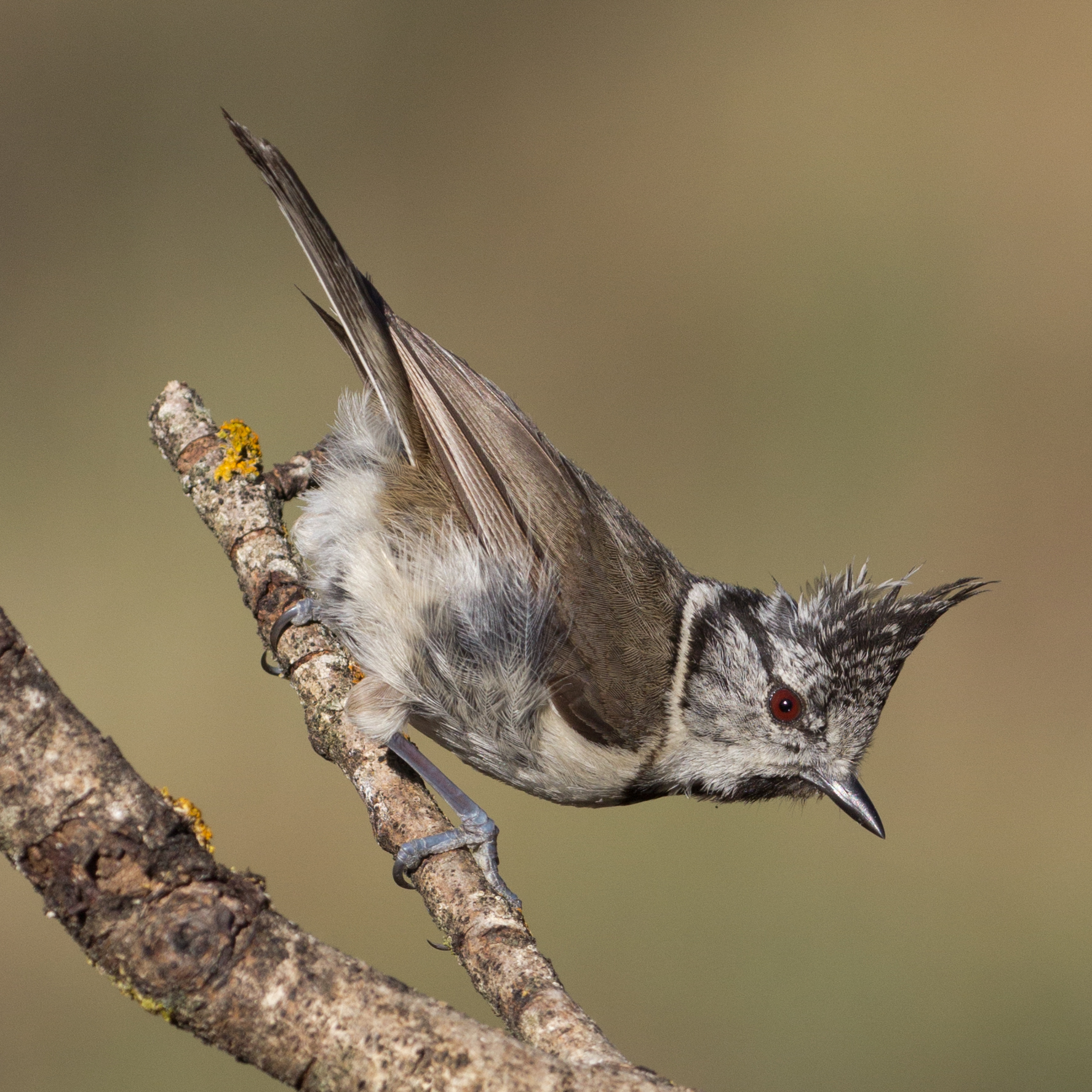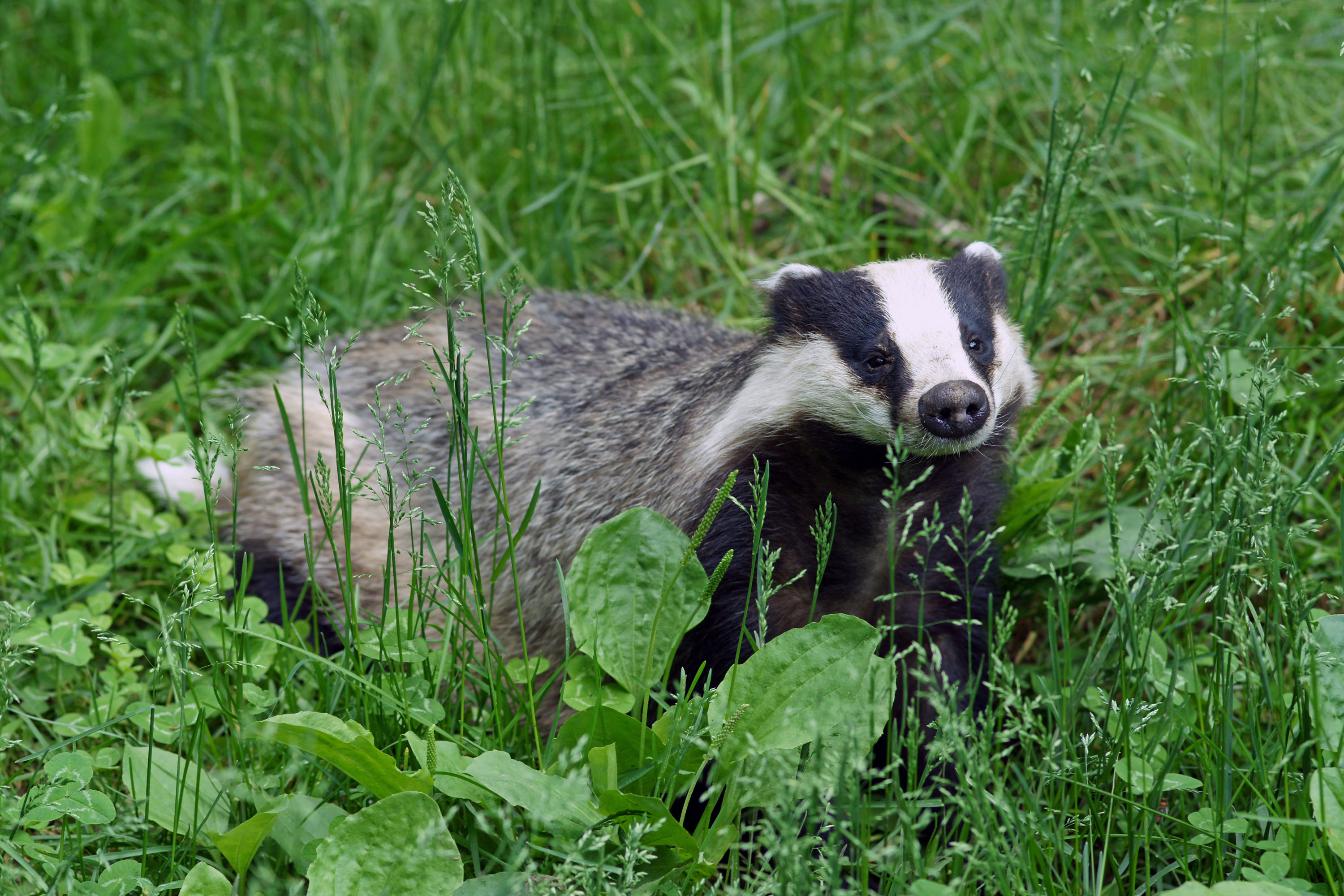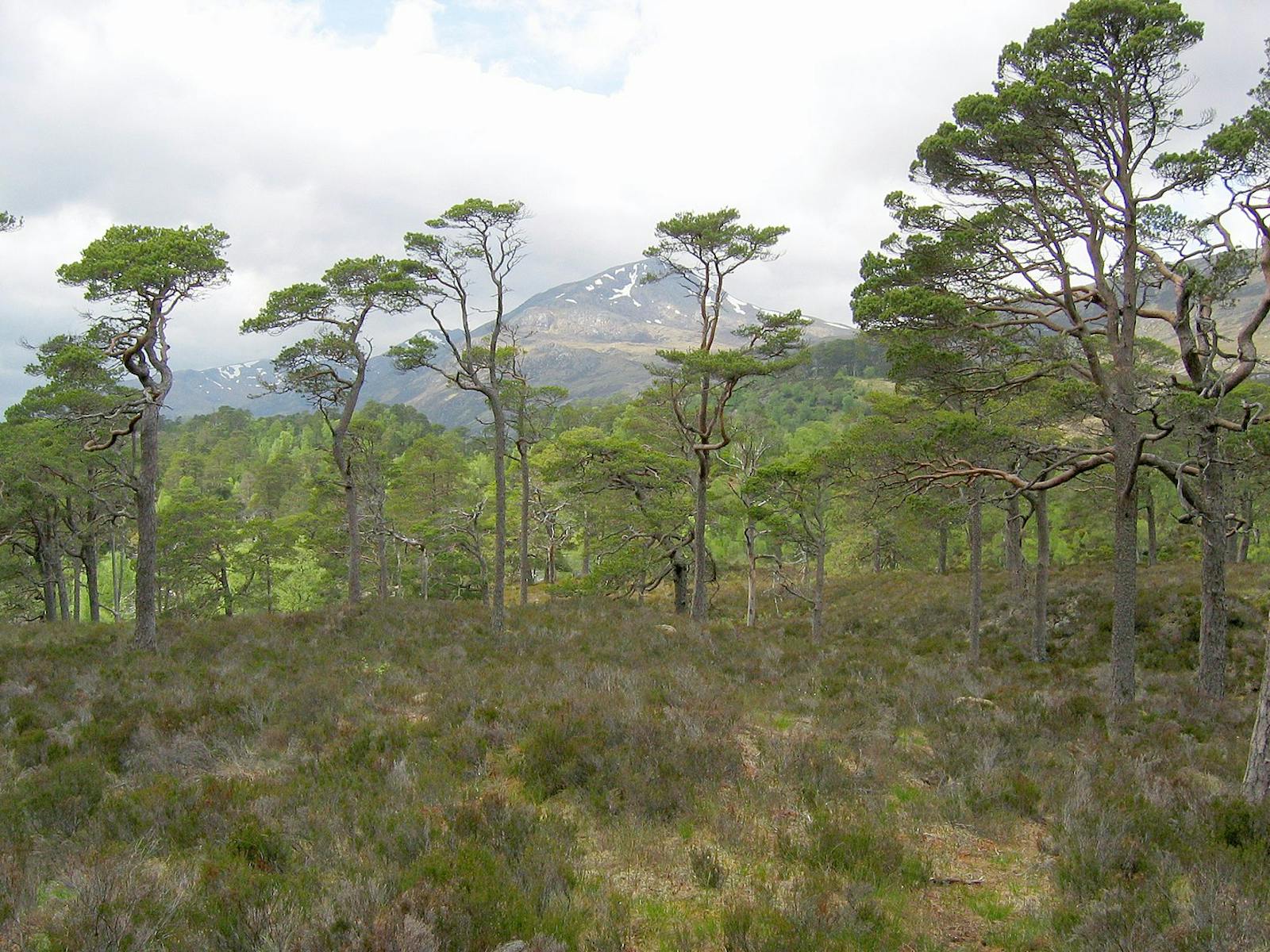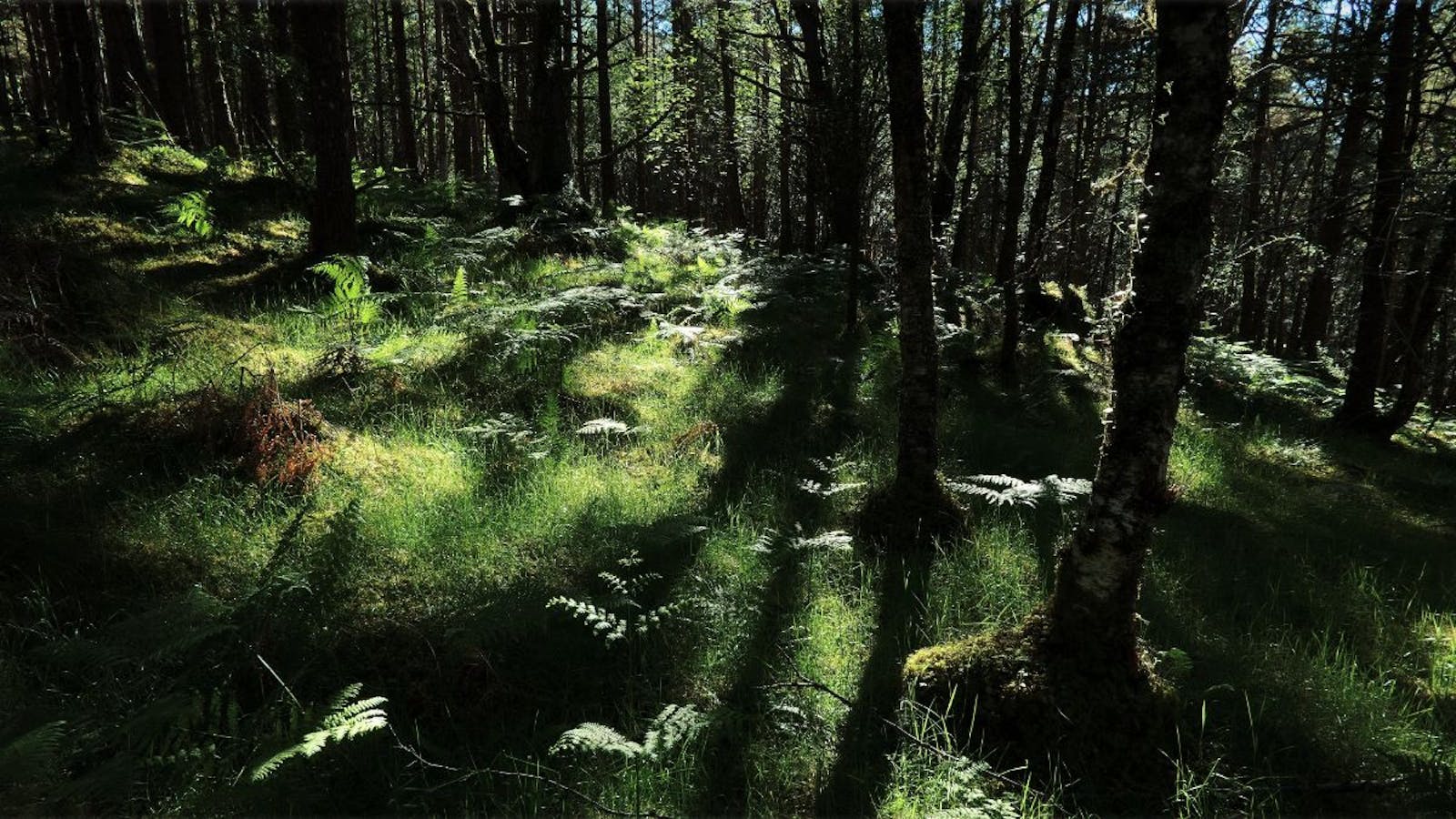Caledon Conifer Forests
The ecoregion’s land area is provided in units of 1,000 hectares. The conservation target is the Global Safety Net (GSN1) area for the given ecoregion. The protection level indicates the percentage of the GSN goal that is currently protected on a scale of 0-10. N/A means data is not available at this time.
Bioregion: Great Britain, Ireland & Faroe Islands (PA9)
Realm: Western Eurasia
Ecoregion Size (1000 ha):
2,205
Ecoregion ID:
691
Conservation Target:
52%
Protection Level:
9
States: United Kingdom
In the Caledon Conifer Forests ecoregion, we find the classic Scottish Highland landscape of sheep-grazed valleys, wooded hillsides, purple-heathered mountains, and fog-blanketed plateaus. There are patches of remnant ancient pine forest, home to the endemic Scottish crossbill and rare capercaillie. The moor and woodland are occupied by emblematic red deer, red and black grouse, and the last Scottish wildcats. Large open spaces support golden eagles; ptarmigan, golden plover, and snow bunting breed on the mountaintops.
.jpeg)
The flagship species of the Caledon Conifer Forests ecoregion is the western capercaillie. Image credit: Sighmanb, Creative Commons
This ecoregion covers upland Scotland, encompassing the Northwest Highlands, Grampian, and Cairngorm Mountains. Ben Nevis, a mountain in the south of the ecoregion 1,345 m tall is the highest point in the United Kingdom. The area is mainly metamorphic rocks with frequent patches of intrusive igneous rock. The climate is warm-temperate with an oceanic influence, generally colder and drier in the east. Average temperatures are 3–14ºC in Lairg and 0–16ºC in Aviemore, with winter temperatures reaching -20ºC in the mountains and a mean annual rainfall of around 875 mm.
The natural tree line of the ecoregion is only 500–600 m above sea level because the oceanic climate imposes restrictions on tree growth. Above this, heather dominates to around 750 m, giving way to mosaics of dwarf shrub heath, including rare montane willow scrub, moss heath, and grassland. On high plateaus, such as the Cairngorms, there is a close sward of woolly fringe moss and late-lying snow patches have a specialist flora of mosses and lichens. Only 4% of Scotland is covered by native woodland and the vast majority of this is in the Highlands. Scots pines are remnants of an ancient forest, found with downy birch, silver birch, and pockets of rowan, juniper, and aspen. Forest floor plants include twinflower, heather, bilberry, and cowberry bushes.

European crosstit. Image credit: Calros Delgado, Creative Commons
Sports hunting of red deer is important to the Highland economy. Mammal predator species include pine marten, Eurasian otter, red fox, Eurasian badger, and wildcat. The ecoregion is the primary location in the UK for red squirrels, mountain hare, red grouse, black grouse, and the Scottish population of western capercaillie, which feeds mainly on pine needles in winter. The Scottish crossbill is endemic to the ecoregion, feeding on seeds from native scots pine. Ptarmigan, golden plover, purple sandpiper, snow bunting, and dotterel breed on mountain plateaus; northern long-eared owl, hen harrier, and golden eagle hunt in the forest and moorland.
Historically, the ecoregion’s forests were of very varied structure, hosting a mosaic of woodland, open grasslands, scrub, heaths, and naturally formed regions of blanket bog. The area has reduced dramatically because of both human intervention and changes in climate. The majority has been converted to agriculture, moorland for grouse and deer hunting, and forest plantations of Sitka spruce and lodgepole pine.

Eurasian badger. Image credit: Creative Commons
The remaining patches are the subject of management, restoration, and expansion. The natural expansion of upland birch woodland is occurring in areas where grazing pressure has been reduced due to the cessation of sheep farming. Scottish capercaillie went extinct around 1785 and was reintroduced in 1837 using birds from Sweden. Despite research study and management, their numbers remain low.
Climate change may have a profound effect on the actual and potential distribution of Scots pine. Natural regeneration of woodland is prevented by the overgrazing of sheep and red deer. Without fencing, reducing sheep numbers, and culling deer, there is little potential to expand the woodlands. Atmospheric pollutants such as nitrogen and sulfur oxides from burning fossil fuels and vehicles affect moorland. Wildlife is poisoned or trapped on some grouse moors. The hybridization of Scottish wildcats with domestic cats is so extensive that the IUCN has advised that it is no longer a viable population without the introduction of unhybridized wildcats from elsewhere in Europe.
The priority conservation actions for the next decade will be to 1) ensure afforestation efforts are strategically planned to increase connectivity without endangering mosaic habitats beneficial to scarce species; 2) prevent wildlife persecution, and 3) prevent overgrazing by deer and sheep in semi-natural habitats.
Citations
- Scottish Biodiversity Group. 2000. Action for Scotland’s Biodiversity. [Online]. [Accessed 15 August 2019]. Available from: https://www2.gov.scot/Resource/Doc/314275/0099822.pdf
- Forestry Commission Scotland. 2014. Scotland’s Native Woodlands: Results from the Native Woodland Survey of Scotland [Online]. [Accessed 15 August 2019]. Available from: https://forestry.gov.scot/publications/74-scotland-s-native-woodlands-results-from-the-native-woodland-survey-of-scotland/download
- Joint Research Centre of the European Commission. 2019. The Digital Observatory for Protected Areas (DOPA) Explorer 3.1: Caledon Conifer Forests. [Online]. [Accessed 14 August 2019]. Available from: https://dopa-explorer.jrc.ec.europa.eu/ecoregion/80503



.png?auto=compress%2Cformat&w=300)

